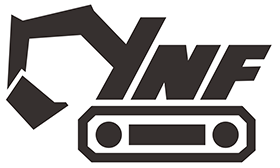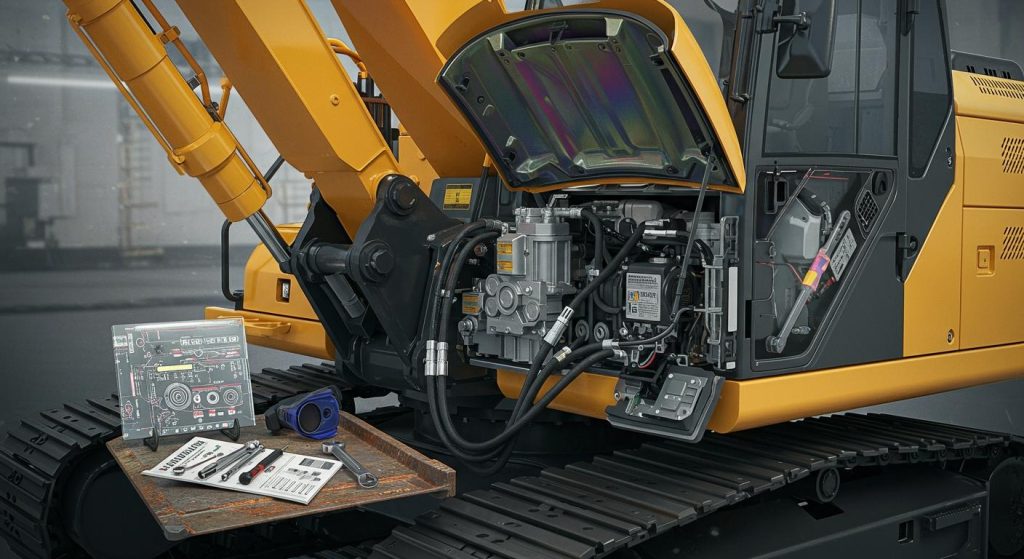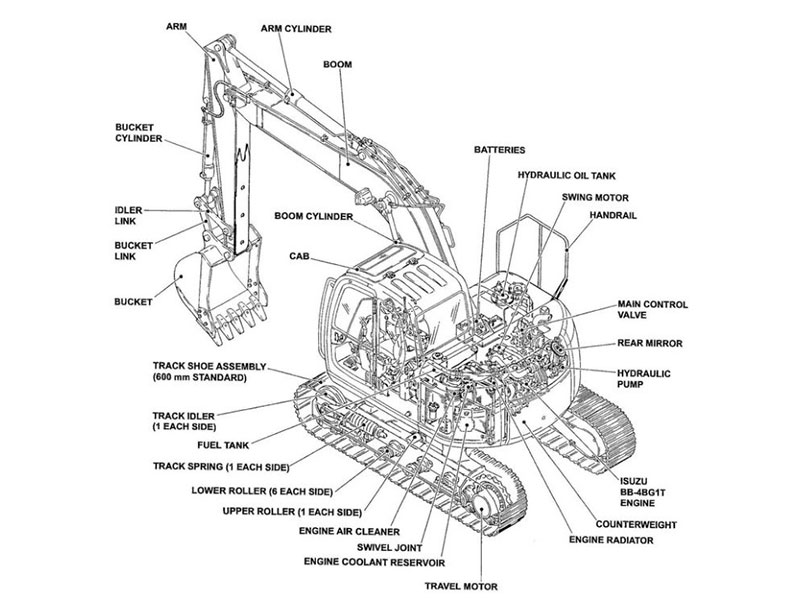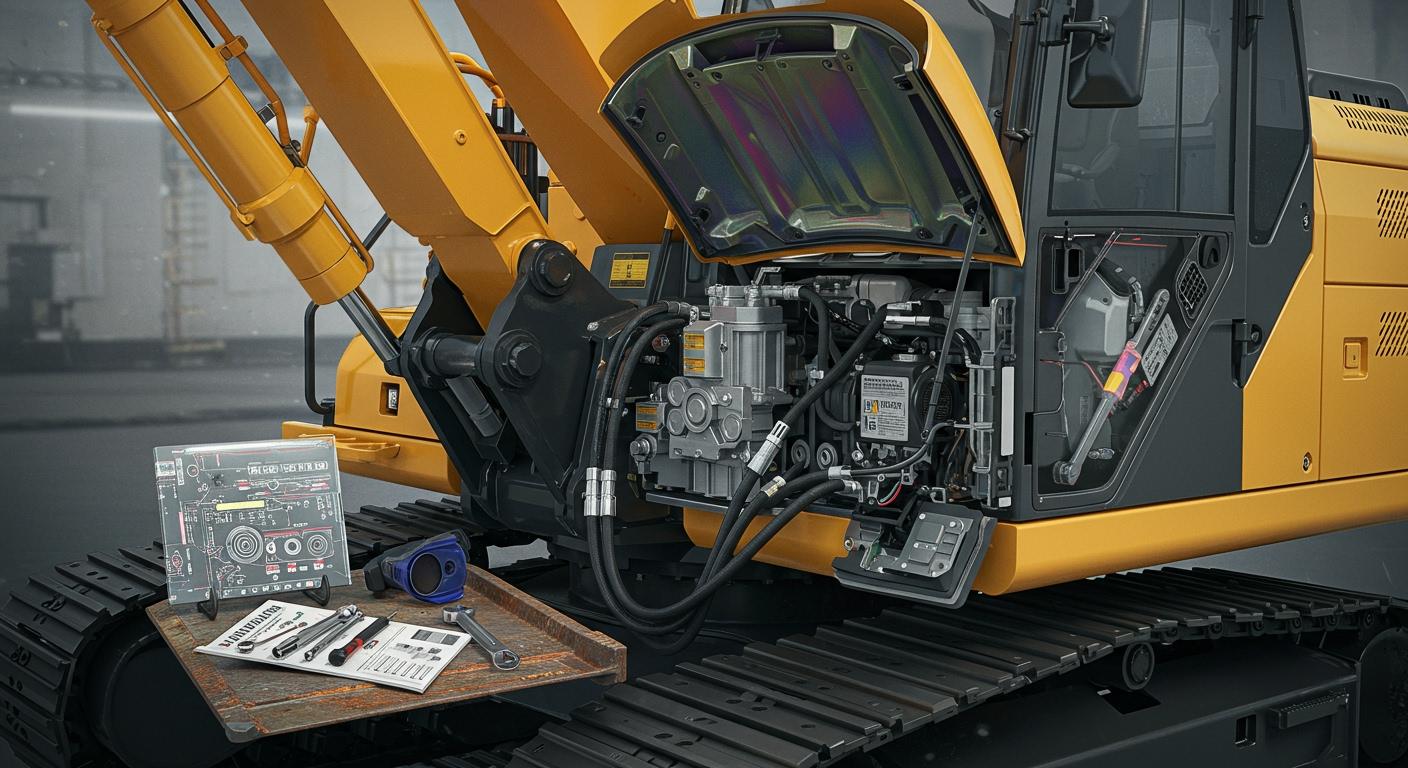
A working excavator hydraulic pump helps your machine work well. If the pump is good, you get strong power and smooth movement. You might see problems like slow actions, weak lifting, or odd sounds if the pump has issues.
A good hydraulic pump gives strong pressure for hard work.
Fast hydraulic flow lets your boom, arm, and bucket move fast.
Taking care of the pump saves fuel and helps you get more done.
Learning simple excavator hydraulic pump repair skills can help you save money and keep your machine working.
Key Takeaways
Check your excavator’s hydraulic pump often for leaks. Listen for strange noises and look at fluid levels. Finding problems early stops bigger issues.
Always use the correct hydraulic fluid. Change filters when you should. This keeps your pump clean and working well.
Follow a step-by-step guide to take apart and put together your pump. This helps you not miss any important parts.
Buy important diagnostic tools like pressure gauges and flow meters. These tools help you find problems fast and correctly.
Think about hiring a professional for hard repairs. Their skills can save you time and keep your excavator working well.
Common Problems and Symptoms
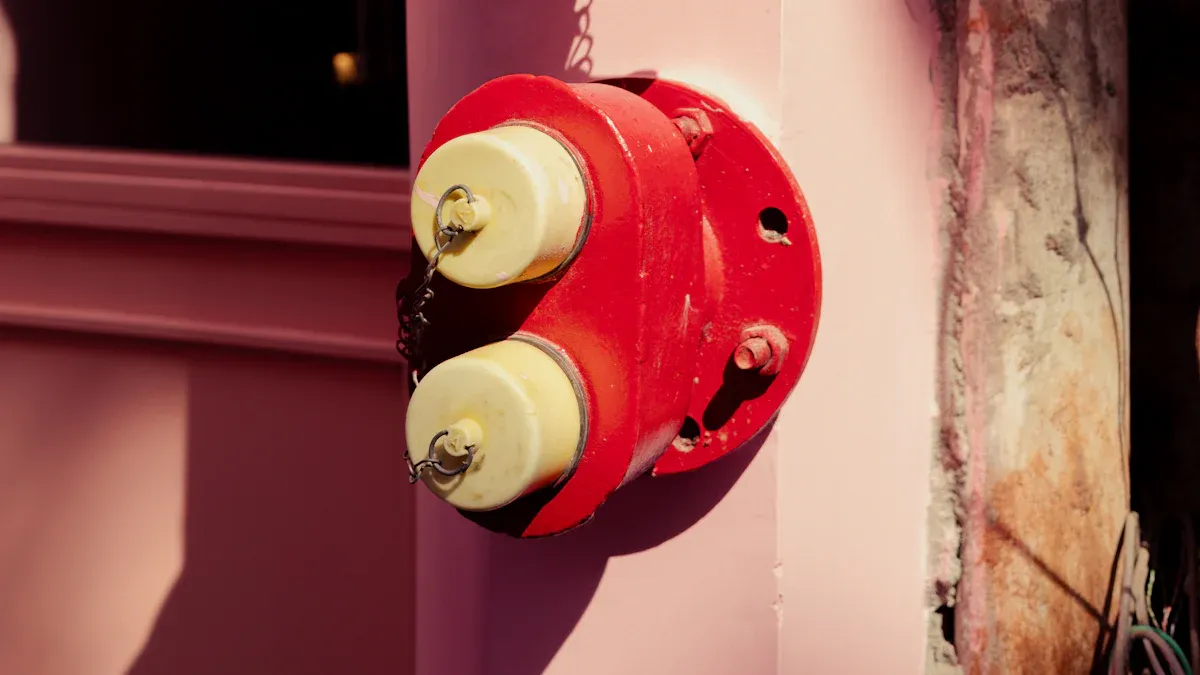
Warning Signs
You can find hydraulic pump problems early if you pay attention. Watch for changes in how your excavator works. Many operators see these problems before the machine breaks down. Here are some warning signs you should notice:
Strange sounds like grinding or whining from the pump
The boom, arm, or bucket moves slowly
The hydraulic system gets too hot
The machine moves in a jumpy or uneven way
Hydraulic fluid leaks near the pump or hoses
You use more fluid than normal
The machine does not work as well as before
The power drops suddenly or slowly
The machine shakes too much when you use it
Dashboard warning lights turn on
Tip: If you hear weird sounds or see leaks, stop and check your excavator right away. Finding problems early can stop bigger hydraulic pump troubles.
Causes
Hydraulic pump failure often happens because of mechanical or environmental reasons. Knowing these reasons helps you stop future breakdowns. Here are the most common causes of hydraulic pump problems:
Water gets in from leaks or condensation
The fluid gets too hot, over 180°F (82°C)
Using the wrong oil or mixing fluids
Cavitation happens when air bubbles form in the fluid
The pump works with too much pressure
Bad filtration and not enough maintenance
Air or water gets inside the system
Blocked suction lines cause inlet cavitation
Tough working conditions like heat, cold, or dust
Note: High heat can hurt seals and break down fluid faster. Cold weather makes fluid thick and hard to move, which causes more problems.
If you know these common causes of hydraulic pump failure, you can protect your equipment and keep your excavator working well.
Troubleshooting Steps
Initial Checks
When you start diagnosing hydraulic pump issues, you should look for simple signs first. These checks help you spot problems before they get worse. Here are some things you can do right away:
Look for leaks around the pump and hoses. Leaks often show up as wet spots or puddles under your excavator.
Listen for banging or knocking sounds. These noises can mean air is trapped in the system or the pump is struggling.
Check the temperature of the hydraulic fluid. If it feels too hot, the system may be overheating, which can damage seals and fluid.
Watch for weak movement in the final drive motor. If the motor feels slow or weak, you might have low hydraulic fluid pressure.
Tip: If you notice any leaks or hear strange sounds, stop the machine and check the system. Quick action can prevent bigger problems.
Regular inspections help you catch issues early. You should always act fast if you see leaks or if the system overheats.
System Tests
After your initial checks, you can use system tests to find deeper problems. These tests help you with hydraulic pump troubleshooting and show if the pump or other parts need repair.
Use a pressure monitoring system to watch for drops in pressure. Low pressure can mean a failing pump or leaks.
Install temperature sensors to keep track of fluid heat. High temperatures can point to blocked lines or worn parts.
Analyze the hydraulic fluid for dirt or water. Contaminated fluid can cause pump damage.
Use a flow meter to measure how much fluid moves through the system. Low flow rates can show internal wear or leaks.
Try a vibration analyzer to check for worn or damaged pump parts.
Run a leak test with a hydraulic leak detector. This tool helps you find leaks that are hard to see.
Note: Always follow safety rules when testing the system. Wear gloves and eye protection to keep yourself safe.
These steps make it easier to find the cause of pump problems. By using the right tools and tests, you can keep your excavator running smoothly.
Excavator Hydraulic Pump Repair
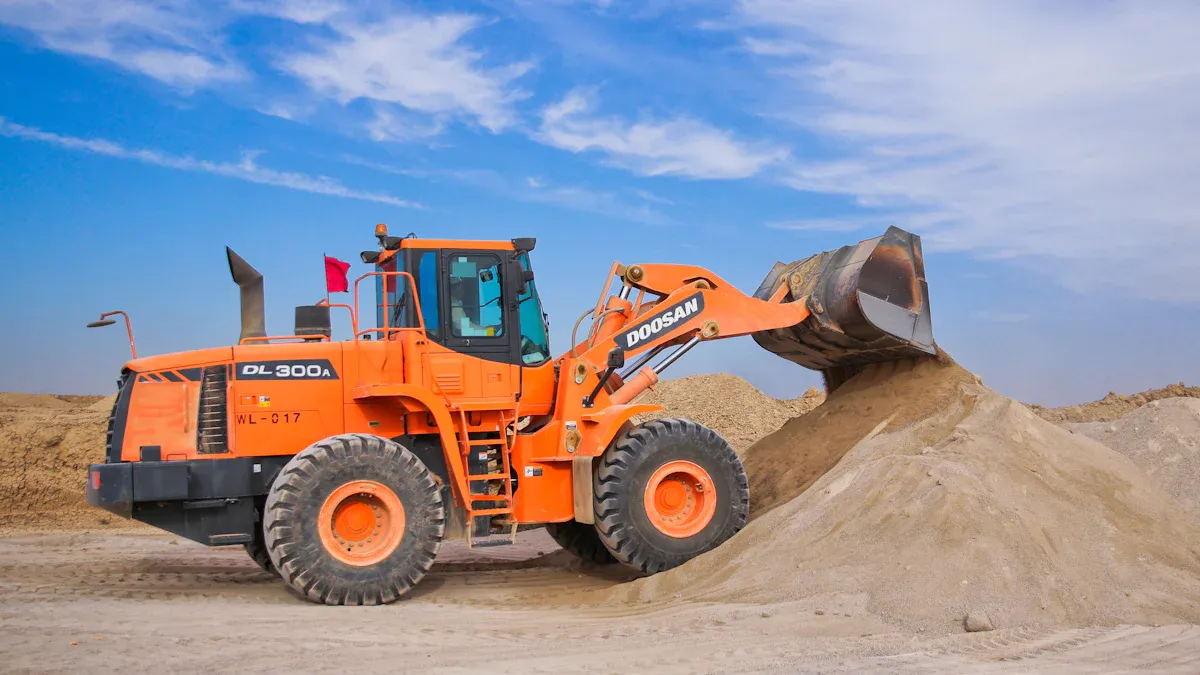
Fixing your excavator hydraulic pump helps your machine stay strong. You can use a step-by-step guide so you do not skip anything important. This part gives you easy steps for taking apart, cleaning, checking, replacing, and putting the pump back together.
Disassembly and Cleaning
First, disconnect the hydraulic pump from your excavator. Always turn off the engine before you start. Release any pressure in the hydraulic system. Use a hydraulic pump diagram to find each part. This helps you avoid mistakes.
Here are the steps to take the pump apart safely:
Take off the regulator by unscrewing the bolts.
Remove the valve plate by taking out the bolts.
Lift the protective cover, but leave the adjustment screws alone.
Pull out the compensating part with springs and rod.
Remove the pilot cover and spring.
Take out the spring seat, return spring, and bushing.
Remove the adjusting plug and fulcrum plug.
Take out the lever, but keep the latch attached.
Pull out the plug and feedback lever with a thin iron bar.
Remove the pilot piston and spool valve.
Last, take out the piston cover, compensation piston, and correction rod.
Clean every part with mineral oil or special hydraulic cleaner. Use a spray gun or brush for cleaning. Do not spray seals and bearings directly. Dry each part with a clean cloth. Cleaning helps you spot damage and keeps dirt away from your pump.
Tip: Put all parts in order as you remove them. This makes it easier to put the pump back together. It also helps you keep track of small pieces.
Inspection and Replacement
After cleaning, check every part for damage or wear. Use your hydraulic pump diagram to match each part by name and number. Look for cracks, scratches, or rust. Use the table below to help you check:
Inspection Point | Description |
|---|---|
Hydraulic Fluid Levels and Quality | Check daily for levels and look for dirty or strange fluid |
Hoses and Seals | Look for cracks, bulges, or scrapes; replace bad parts |
Common Wear and Tear | Listen for odd noises, leaks, or weak performance |
Lubrication | Make sure all parts have enough grease |
Replace any parts that are broken or worn out. The most common parts to change during repair are:
Hydraulic pump
Hydraulic cylinder
Oil tank
Valve
Filter
Change the hydraulic oil and filter often. This keeps your system clean and helps your pump last longer. If you ignore these parts, you could have bigger problems and costly repairs.
Note: Always use parts that fit your machine’s model and serial number. Check your hydraulic pump diagram and the OEM catalog before buying new parts.
Reassembly
Before you put the pump together, check fluid levels and the suction strainer. Good fluid levels stop cavitation and help your pump work well. A clean suction strainer stops clogs and protects your pump.
Make sure the suction strainer is clean and has no grease or dirt.
Fill the hydraulic oil tank to the right level.
Check that all pump chambers are filled.
Follow the manufacturer’s rules for putting the pump together. Use the right torque for each bolt. Put special grease where needed. The table below shows important details:
Specification Type | Details |
|---|---|
Bolt Torque Verification | Tighten every ‘life bolt’ |
Pump Body Cover Bolts | 35-40 N·m |
Valve Plate Cover Bolts | 35 N·m |
Inclined Plate Adjustment Spring Cover | 40-45 N·m |
Cleaning Procedure | Use low leftover industrial alcohol (IPA) |
Lubrication Points | Use special extreme pressure grease |
Re-inspection Frequency | First 50 hours, then every 300 hours |
Vibration Analysis | 38-point scan every 500 hours |
Temperature Monitoring | Alarm if temperature goes over 80℃ |
Use your hydraulic pump diagram to check that every part is in the right spot. Match the diagram to your machine’s model and serial number. This helps you avoid mistakes and keeps your pump working right.
Tip: After you finish, run the excavator and look for leaks, noises, or warning lights. If you see problems, stop and check your work.
Fixing an excavator hydraulic pump takes time and care. By following these steps, you can fix pump problems and keep your excavator running well.
Tools and Professional Help
Essential Tools
You need special tools to fix your excavator’s hydraulic pump. The right tools help you stay safe and find problems fast. Using good diagnostic equipment helps you do a better job and make fewer mistakes.
Here are some tools you need for hydraulic pump repair: Wrenches and socket sets help you take off bolts. Hydraulic pressure gauges let you check the system pressure. Flow meters show how much fluid moves in the system. Vibration analyzers help you find worn bearings. Leak detectors help you find leaks you cannot see. Temperature sensors and thermal cameras check if parts get too hot. Clean brushes and spray guns help you clean the pump parts. Hydraulic pump diagrams help you know which part is which.
Tip: Always use a hydraulic pump diagram when you work. It helps you match the right parts and not make mistakes.
Special diagnostic equipment makes your repairs better. The table below shows what each tool does for you:
Diagnostic Technique | Benefit |
|---|---|
Pressure and Flow Testing | Tells you how well the pump works. |
Noise and Vibration Analysis | Finds problems you cannot see by looking. |
Internal Leakage Testing | Shows if you need to rebuild or replace the pump. |
Case Pressure Testing | Finds control system problems that lower flow. |
Temperature Monitoring | Warns you about overheating early. |
Thermal Imaging | Finds hot parts before they break. |
Oil Analysis Trending | Lets you know about wear and bad fluid early. |
You can get all these tools and parts from YNF Machinery. This company has good choices for fixing your excavator hydraulic pump. You do not need to shop anywhere else.
When to Call a Pro
Sometimes you need an expert to fix your hydraulic pump. Hard problems or a pump that will not work need special skills and tools. Call a pro if you see these things: The pump will not work at all. You cannot figure out what is wrong. You see big leaks or broken parts. The system shows warning lights you do not understand.
Professional repair services give you many good things:
Benefit | Description | Impact |
|---|---|---|
Superior Technical Skills | Trained experts find and fix problems fast | Repairs are right and you wait less time |
They use the best parts for your machine | Parts fit better and last longer | |
Efficient Service | Repairs are quick because of special training | You get up to 30% less downtime |
Getting a pro to fix your pump costs more money. But you get repairs you can trust. Easy repairs cost about $700 to $1,500. Hard repairs can cost over $3,000. A new hydraulic pump can cost $1,500 to $15,000 or more. Rebuilding a pump costs $800 to $7,500. Pros use OEM parts, so your excavator works better and lasts longer.
Note: If you want your excavator to work like new, hiring a pro is often best. You save money later because you do not have to fix the same problem again.
Maintenance Tips
Regular Checks
You can help your excavator hydraulic pump last longer by checking it often. If you find problems early, you can fix them before they get worse. This saves you money and keeps your machine working. Here are some good ways to take care of your hydraulic pump:
Look at your pump and hoses for leaks or damage.
Check the fluid level every day before you start work.
Change filters every 500 hours or when the manual says.
Use good hydraulic fluid that fits your pump.
Watch the pump temperature with a gauge so it does not get too hot.
Follow the maintenance plan from your pump’s maker.
Fix worn parts fast so bigger problems do not happen.
Tip: Make a list for daily and weekly checks. This helps you find small problems before they turn into big ones.
Fluid and Strainer Care
Hydraulic fluid and suction strainers are very important for your pump. If the fluid is dirty or low, your pump can have many problems. These problems include cavitation, overheating, and even pump failure. You should do these things to keep your system clean and working well:
Check the fluid and suction strainer for dirt or trash. Clean or change the strainer if you need to.
Keep the hydraulic reservoir full so air does not get in.
Look at the fluid. It should be clear, not dark or foamy.
Check for leaks near the pump, hoses, and fittings.
Test the pump and relief valve to make sure they work. Listen for strange sounds.
Dirty fluid can hurt your pump in many ways:
Impact Type | Description |
|---|---|
Increased Wear and Tear | Dirt and bits wear out pump parts faster. |
Reduced Efficiency | Dirty fluid moves slower and lowers power. |
Component Clogging | Trash can block passages and break the system. |
Increased Operating Temperatures | Dirty fluid makes more friction and heat, hurting parts. |
Corrosion Damage | Water in the fluid can rust metal parts. |
Impaired Sealing Functionality | Bits can hurt seals and cause leaks. |
Fluid Degradation | Bad fluid cannot protect or grease parts well. |
Note: You can buy good hydraulic parts and filters from YNF Machinery. These help your excavator stay strong.
You can keep your excavator hydraulic pump working well by following easy steps. Use hydraulic system diagrams to find problems early. This helps you avoid taking apart parts you do not need to. Regular checks and good care, like using high-quality fluid and checking filters, help you stop breakdowns.
Look at fittings for rust or loose pieces.
Check seals and O-rings for any damage.
Keep your work area clean so dirt does not get in.
Always turn off the system and let out pressure before fixing anything.
Only trained people should work on hydraulic parts.
Taking care of your machine and being safe helps you save money. It also keeps your excavator strong. If you need good parts or help, YNF Machinery has what you need for your excavator.
FAQ
How often should you check your excavator’s hydraulic pump?
You should check your hydraulic pump every day before you start work. Regular checks help you find leaks, low fluid, or damage early. This keeps your excavator safe and strong.
What hydraulic fluid works best for excavator pumps?
You should use high-quality hydraulic fluid that matches your excavator’s manual. Good fluid protects pump parts and helps your machine work better. Always avoid mixing different fluids.
Can you repair a hydraulic pump yourself?
You can fix simple problems like leaks or dirty filters. For big issues, you should call a professional. If you need parts or help, YNF Machinery offers reliable solutions.
Why does your hydraulic pump make strange noises?
Strange noises often mean air is trapped, fluid is low, or parts are worn out. You should stop your machine and check for leaks, loose bolts, or dirty fluid.
Where can you buy quality hydraulic pump parts?
You can buy quality hydraulic pump parts from YNF Machinery. They offer pumps, filters, and seals that fit many excavator models. Good parts help your machine last longer.
